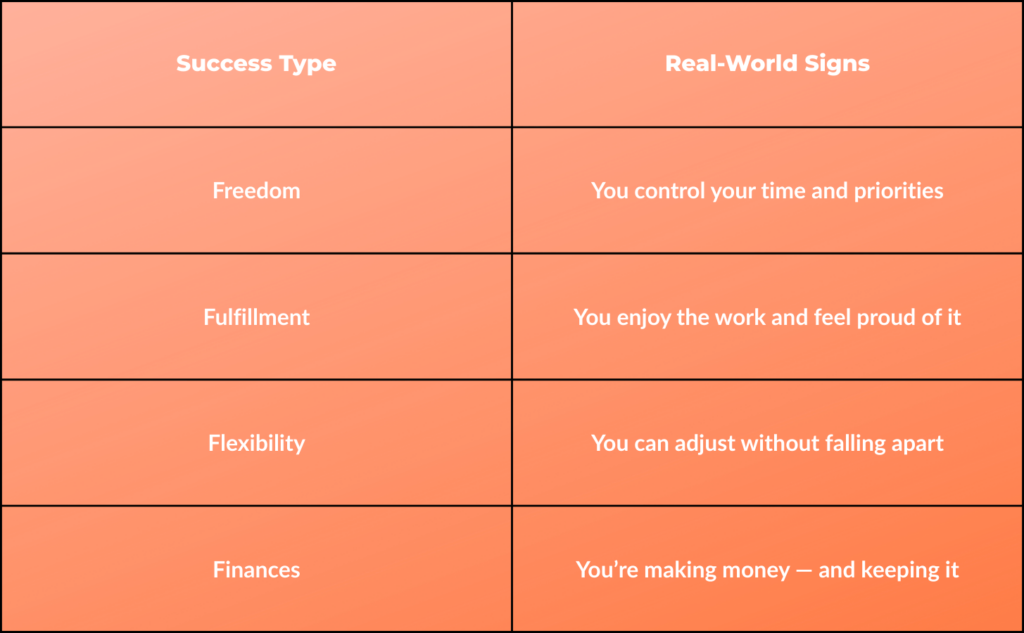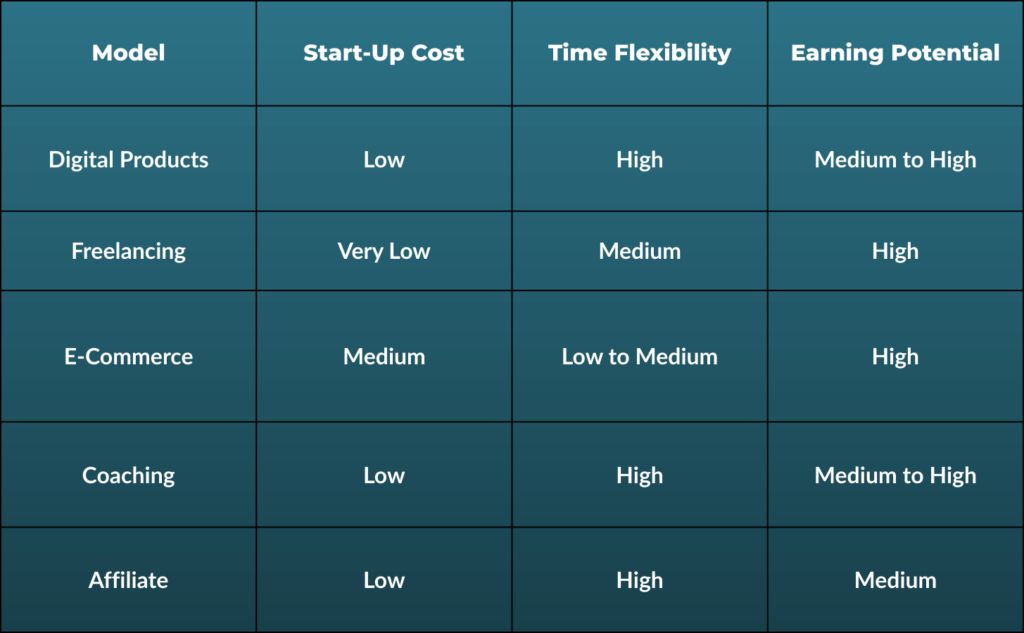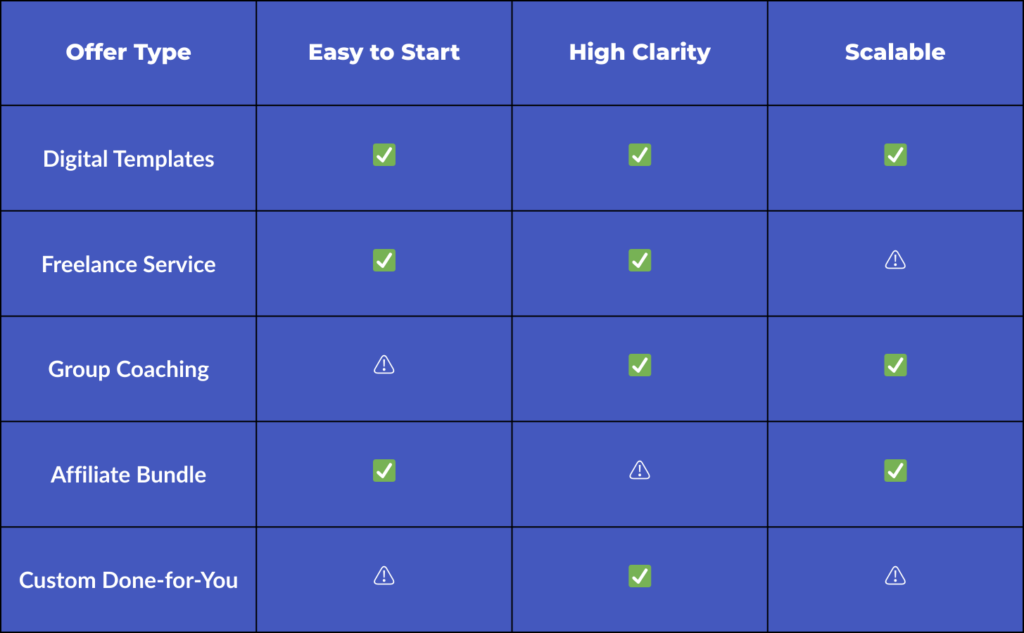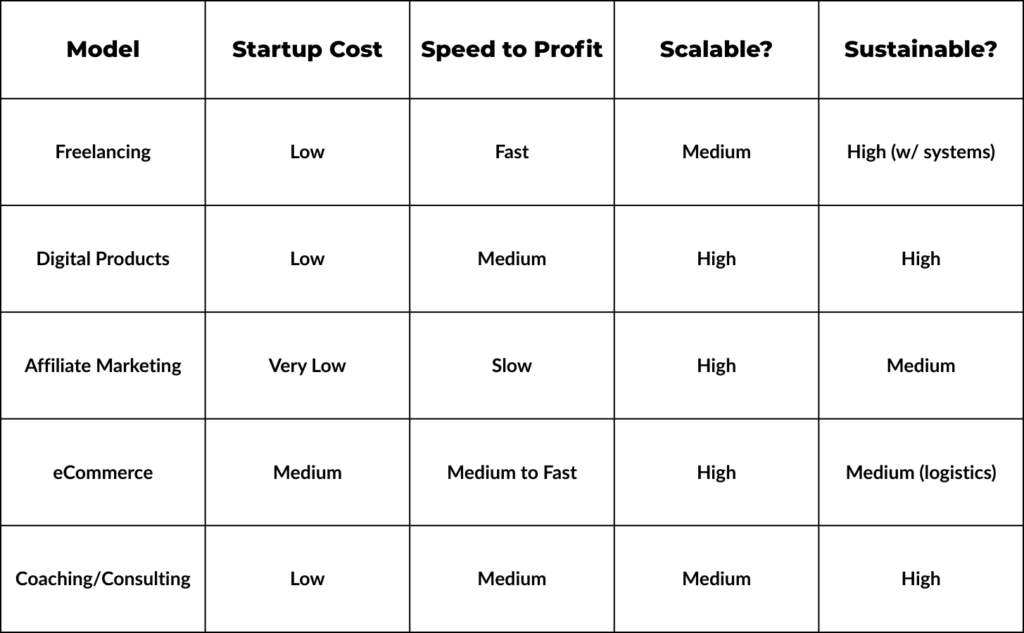Some links on this site are affiliate links, including Amazon affiliate links. As an Amazon Associate, I earn from qualifying purchases. If you click and make a purchase, I may earn a small commission—at no extra cost to you. I only recommend products I genuinely trust and use.
Why Home-Based Business Success Is More Than Possible
You’re not the only one wondering if this can actually work.
Here’s the answer: it absolutely can.

But not in the way most people imagine.
We’ve been sold a version of home-based business success that looks like beaches, laptops, and instant passive income. And while that might look good on Instagram, it’s not the full picture — and it’s not what real builders experience.
Real success looks quieter.
It looks like 6 a.m. work blocks before the kids wake up.
Like figuring out how to build a landing page with no tech background.
Like posting your first offer and hearing… nothing.
And then showing up again anyway.
That’s the part no one posts about — and it’s exactly why so many people quit too early.
They assume it’s not working because it doesn’t look like the highlight reel.
But what if you’re not behind?
What if you’re just building?

According to the U.S. Census Bureau, applications for new businesses from home hit record highs in 2023 — especially among first-time entrepreneurs. People aren’t just dreaming about working for themselves. They’re actually doing it. And they’re starting from kitchens, bedrooms, and garages across the country.
The question isn’t “Is home-based business success possible?”
The question is “Are you willing to play the long game?”
Success doesn’t come from hacks, reels, or magic funnels. It comes from getting the right things clear — your offer, your audience, your message — and building systems that don’t burn you out.
And here’s the good news.
You don’t have to do it all.
You just have to do what actually works.
In fact, that’s exactly what we talk about in the Visibility Reset FREE guide — how to stop spinning your wheels and focus on the seven things that actually move the needle. The same steps I used to grow my business from a side hustle to a full-time income, while raising a family and doing everything from home.
Because let’s be honest.
Most people aren’t failing because they’re lazy.
They’re failing because they’re overwhelmed and chasing tactics instead of building strategy.
If you’ve tried before and stopped, that doesn’t mean you failed.
It means you’re normal.

And if this is your first real shot, you’re already ahead of the game — because you’re starting with intention, not noise.
Home-based business success isn’t a fantasy.
It’s a process.
And once you see what that process looks like — in real terms — it stops feeling like a gamble and starts feeling like a plan.
Let’s walk through the seven proven steps together.
What Does Home-Based Business Success Really Look Like?
What does success actually look like when you run your business from home?
Is it about hitting six figures?
Or is it something deeper?
The truth is, home-based business success isn’t always loud. It doesn’t always show up in screenshots or income reports. Sometimes it looks like quiet mornings with coffee and clarity. Sometimes it’s getting paid for work you love — while still making it to your kid’s game, or finally turning that creative spark into income.
We’ve been conditioned to equate success with numbers.
But numbers don’t tell the full story.
That’s why I teach a different model — one that actually reflects the kind of life most people are trying to build when they start something from home.
It comes down to four things:
Freedom. Fulfillment. Flexibility. Finances.
Let’s break it down.
- Freedom means you decide when, where, and how you work. No commute. No one watching the clock but you.
- Fulfillment is doing work that matters — not just to others, but to you. Work that taps into your strengths, not just drains your time.
- Flexibility is the ability to rearrange your schedule when life throws curveballs. Whether it’s school drop-offs, elder care, or just needing a break — you call the shots.
- Finances aren’t just about big launches or seven-figure claims. It’s about building steady, meaningful profit — enough to breathe, grow, and give.
Still not sure what that looks like in the real world?
According to a recent University of Phoenix study, over 60% of self-employed individuals report being more satisfied and less stressed than when they worked traditional jobs.
Not more famous. Not more followed. Just more satisfied.
And that matters.
Because if you’re building a business just to replace a paycheck, you’re missing the point.
This is about something more.
Ownership. Direction. Peace of mind.
Here’s a simple chart to reframe the way we measure success from home:

No, it won’t always feel like a dream.
Some days you’ll wonder if it’s working. Other days you’ll wish you were further ahead.
But here’s what most people forget:
You’re not behind.
You’re just building something real.
That clarity — the kind that lets you stop chasing and start growing — is exactly what we unpack in the Visibility Reset FREE guide. Because if you don’t define success on your own terms, someone else will.
And that’s not why you started.
Ready to explore the business models that still work in 2025?
Let’s keep going.
The Most Successful Home-Based Business Ideas (That Still Work in 2025)
There’s a common lie people believe when they start a business from home.
That they have to reinvent the wheel.
But the truth is, some of the most successful home-based business models today are the same ones that have worked for years — and they’re still thriving in 2025. What changed? The tools got better. The audiences got more specific. And more people are building with intention instead of hype.
So what actually works?
Digital products. Freelance services. Online education. E-commerce. Affiliate marketing. Coaching. You don’t need all of them. You just need one that fits your strengths, your schedule, and your goals.
Let’s break it down with examples that are working right now — not just for influencers, but for everyday people building steady, profitable businesses from home.
A former customer service rep created a set of Notion templates to help creatives organize their content and sold them through a $29 bundle. She made $800 her first month. It wasn’t viral. But it was real.
A husband and wife team started a side hustle making custom wood signs. With nothing more than an Etsy shop and a Facebook group, they turned it into a full-time business within 18 months. No ads. Just consistent connection and quality offers.
Someone else — stuck in a dead-end job — took a free online course in web design, built one client site for $500, then turned it into a retainer model that replaced his income in under a year.
These aren’t unicorn stories. They’re repeatable.
And they all started the same way: by picking one thing and following through.
The most successful home-based business ideas don’t come from trends. They come from matching a problem to a solution — and showing up long enough to deliver it well.
Here’s what makes these business models work:
They’re low overhead.
They’re flexible.
And they can grow with you.
Digital products let you create once and sell forever.
Freelance services let you earn quickly using skills you already have.
Coaching and consulting turn life experience into value.
Affiliate marketing rewards trust and audience building.
E-commerce allows you to ship physical solutions to real problems.
Need a visual comparison? Here’s a quick breakdown:

Each has pros and cons.
But what matters most is not which one you choose — it’s whether you actually build it.
If you’re unsure which path fits you best, we talk about this in the Visibility Reset FREE guide. You don’t need 10 ideas. You need one that works for you.
And once you’ve picked your model?
The next step is making it work — without burning out.
Let’s dig into that next.
How to Make a Home-Based Business Successful (Without Burning Out)
Most people don’t quit because they weren’t capable.
They quit because they were exhausted.
It’s not the business model that fails. It’s the lack of a sustainable system.
So how do you make a home-based business successful without burning out? You build it around real life — not in reaction to it. You set clear priorities. You simplify. You stop trying to do what doesn’t match your season, energy, or purpose.
Here’s a truth not enough people say out loud.
Working from home doesn’t automatically mean less stress.
It can mean more distractions. More pressure. More blurred lines between rest and responsibility.
If you’ve ever felt like you were “working all the time but not getting anywhere,” you’re not alone. That’s the burnout zone. That’s where progress dies.
Let’s fix that with a simple, proven 3-step roadmap.
Step one: pick one offer and one audience.
You don’t need a brand. You don’t need a funnel. You don’t even need a logo. You need to solve a specific problem for a specific person — in a way that’s easy to say and easier to buy. If you can write your offer in one sentence, you’re ahead of 90% of the people online.
Step two: build visibility that fits your strengths.
Hate dancing on reels? Don’t do it. Prefer writing? Start an email list. Like teaching? Record short tutorials. You don’t have to be everywhere — just somewhere consistently. That’s what we unpack in the Visibility Reset FREE guide: how to simplify your visibility and make it actually work.
Step three: create a weekly rhythm that matches your capacity.
One hour a day. Three solid work blocks per week. Fifteen minutes of needle-moving activity each morning. There’s no “right way” — there’s only what you can do and stick with. And no, that doesn’t make you lazy. It makes you smart.
Want a simple filter?
Ask this each week:
Am I doing what grows the business — or what just keeps me busy?
Growth looks like publishing, pitching, creating, selling.
Busy looks like tinkering, scrolling, overplanning, comparing.
Most people who find real home-based business success focus on doing one hard thing a day — not 47 small ones. They work with discipline, not hustle. And they know that consistency beats intensity.
Here’s an example schedule that works for real builders:
- Monday – Write and publish content
- Tuesday – Make or improve one offer
- Wednesday – Serve clients or engage audience
- Thursday – Rest, learn, or reset
- Friday – Send email or promote
- Weekend – Optional batch time or planning (1 hour max)
That’s it. No overwhelm. Just direction.
And if you fall off?
You reset. You don’t restart. That’s the mindset shift that separates dreamers from doers.
So yes — you can absolutely make a home-based business successful.
You just have to stop building it like a sprint and start building it like something that’s going to last.
Next, let’s talk about your offer — and why most people get it wrong.
Offers That Convert: What Makes a Successful Home-Based Business Offer?
You can have the perfect idea, the right niche, and solid content.
But if your offer doesn’t connect?
The business stalls.
So what makes a successful home-based business offer? It’s not complexity. It’s not fancy design. And it’s definitely not pricing tricks. It’s clarity. Confidence. Simplicity.
Here’s what most people miss:
People don’t buy ideas.
They buy outcomes.
You’re not just selling a product or a service. You’re selling a result. A change. A solution to something they’re tired of Googling every night.
So if your current offer isn’t selling, don’t panic.
Just ask:
Can someone explain it back to me after reading it once?
If the answer is no, you’ve got a clarity problem — not a value problem.
Let’s look at what makes an offer convert.
I use a five-point checklist that’s helped both beginners and six-figure earners build offers that actually bring in revenue.
- Specific – It solves one clear problem, not five.
- Urgent – It addresses a pain or desire that feels real right now.
- Aligned – It matches your skills, story, and who you want to serve.
- Simple – It’s easy to understand, describe, and deliver.
- Shareable – It’s something people feel good talking about or recommending.
You don’t need to check all five on day one. But aim for at least three — and you’ll be way ahead of the noise.
Here’s a quick chart that shows how different types of offers stack up:

Now let’s get practical.
A successful offer can be as simple as:
“I help beginner writers land their first freelance client in 30 days using 3 templates and a cold email script.”
That’s not fancy. But it’s effective.
One woman I worked with took a journaling practice she had developed for herself and turned it into a $17 printable workbook. She called it “Quiet Momentum” — a way to build clarity without the chaos. That single product brought in over $4,000 in the first three months because it spoke to exactly what her audience was feeling.
That’s the power of a clear offer.
It doesn’t need bells and whistles.
It just needs to speak the language of someone who’s ready to change.
If your offer still feels fuzzy?
Use this formula from the Visibility Reset FREE guide:
“I create [what] to help [who] get [result].”
Write it. Read it out loud. Then cut the fluff.
Remember — you’re not here to convince people.
You’re here to help the right ones say, “That’s exactly what I need.”
In the next section, we’ll look at real home-based business success stories — and what they all had in common at the beginning.
Home-Based Business Success Stories (That Started Just Like You)
Everyone loves a good success story.
But when you’re in the middle of building your own?
It can feel like those stories belong to someone else.
Someone with more time.
More support.
More confidence.
But here’s what I’ve learned after two decades in business:
The people who find home-based business success rarely started with more.
They just stuck with it longer.
Let me introduce you to a few real people whose stories I’ve seen unfold — quietly, consistently, and without shortcuts.
One woman started out working customer support during the day and writing blog posts at night. She wasn’t loud. She didn’t have a personal brand. She just had a topic she loved — productivity for introverts. She turned her blog into a weekly newsletter, then built a $27 mini-course teaching her system.
The first launch? Six sales.
The second? Twenty-three.
By month four, she had earned more than her full-time job.
Another story?
A couple started with no audience, no email list, and no experience. They were running a household, homeschooling, and trying to make something work in the margins. Instead of chasing shiny tactics, they picked one platform (Pinterest), one offer (a printable budget planner), and committed to one post a day. Twelve months later, they were doing $4,000 a month in passive income — from a product they made in Canva.
And then there’s the guy who had tried everything. Drop shipping. Crypto. Courses. Nothing stuck. He was ready to give up when he came across an idea that felt too simple: selling setup services for a specific software tool. He charged $250 for something he could do in under two hours. That one service turned into a six-month client retainer, then referrals. He didn’t blow up overnight. But he did quit his job the following year.
What do these stories have in common?
None of them started with “influence.”
None of them had a team.
None of them waited to feel ready.
They just got clear, started small, and built momentum over time.
If you’ve felt like your wins don’t count because they’re not big enough yet, I want you to remember this:
Quiet progress is still progress.
A $100 win is still a win.
Momentum doesn’t always roar — sometimes, it whispers.
That’s what home-based business success really looks like.
It’s someone choosing to keep showing up, even when no one’s clapping yet.
It’s imperfect action, taken again and again, until results follow.
Want to start building your own story?
Go back to the basics. One offer. One platform. One audience. That’s where it begins — for everyone.
Next, let’s talk about profitability. Because picking the right business model is only half the equation.
Which Home-Based Business Is Most Profitable? (Depends on You)
Everyone wants to know where the money is.
Which home-based business is the most profitable?
It’s a fair question — but it’s the wrong first question.
Profit alone isn’t the point.
Sustainability is.
Because what’s the use of a business that pays well but drains you dry?
The most profitable home-based businesses are the ones that match your strengths, fit your season, and grow with your life — not against it. That’s what makes the income stick.
Let’s walk through the five most common and profitable home-based business models still working in 2025. These aren’t fads. They’ve stood the test of time, and people are quietly making real money with each of them.
1. Freelancing
This is the fastest way to earn from a skill you already have. Writing. Tech. Admin. Design. You offer a service, land a client, and get paid. It’s time-for-money, yes — but if you build systems or shift into retainer work, it becomes stable and scalable.
Best for people who want to get started fast and don’t mind client work.
2. Digital Products
Create it once, sell it forever. Templates, toolkits, courses, ebooks — all of these can be built on platforms like Gumroad, Payhip, or ThriveCart. There’s more effort upfront, but the scalability is high. Especially if you’re focused on solving a clear problem.
Best for creative thinkers, educators, or systems-minded builders.
3. Affiliate + Content Model
You earn commission by recommending products or tools you trust — through content like blogs, emails, or videos. This builds slowly, but once the machine is running, it’s low-maintenance income. Your job is to create helpful content and build trust.
Best for introverts, educators, and anyone who prefers behind-the-scenes consistency.
4. eCommerce
Whether you’re shipping products from home or using print-on-demand services, eCommerce can be both rewarding and profitable. From Etsy shops to private label stores, this model lets you serve tangible needs. It does come with logistics, though — inventory, shipping, customer service, or supplier management.
Best for those who love branding, packaging, and physical products.
5. Coaching or Consulting
You help others get results using your experience — in life, business, relationships, health, or faith. This can be incredibly fulfilling and profitable, especially with group programs or high-touch offers. But it’s also demanding.
Best for people-driven builders who love mentorship and transformation.
Still wondering which one is “best”?
It’s the one you’ll still want to work on six months from now.
The one you’ll talk about with energy and confidence.
The one you can grow without resenting.
Here’s how these business models compare at a glance:

The goal isn’t to pick the “right” one.
It’s to pick the one that’s right for you — and build a process around it.
When your business model matches your motivation, momentum follows.
Next up, let’s talk about the tools, habits, and support that turn early wins into long-term success.
The Tools, Habits, and Support That Make Success Sustainable
You don’t just need a plan to start.
You need a system that keeps going.
That’s the secret to home-based business success. It’s not just what you build. It’s what you maintain, repeat, and improve — especially when momentum slows or life gets unpredictable.
Let’s talk about what actually makes that happen.
Not theories. Not wishlists. Just practical tools, steady habits, and support you can lean on when motivation fades.
The Tools
You only need four tools to build and grow something solid from home.
One to send messages to your audience — like emails or updates.
One to organize your work and keep you focused.
One to deliver your offer and accept payment.
And one to track how people find and interact with your content.
That last one is critical.
If you don’t know what’s working, you’ll waste time guessing.
The best tools aren’t flashy. They’re consistent.
They reduce overwhelm, save time, and show you where to focus next.
If it’s not doing one of those things? You probably don’t need it.
The Habits
You don’t need to do more.
You need to do what matters — more consistently.
Try this rhythm:
Create something helpful each day — even if it’s small.
Show up weekly with something useful for your audience.
Improve one offer or process each month.
Check in every Friday to review what worked (and what didn’t).
These habits build traction.
They don’t require hustle. They require intention.
And when you stack them, week after week, the momentum compounds — even when it doesn’t feel dramatic.
The Support
Trying to do this alone is what keeps most people stuck.
Not because they aren’t smart. But because no one thrives in a vacuum.
You need someone you can message when you’re second-guessing yourself.
Someone who gets what it’s like to build something from scratch while managing real life.
Someone who can say, “Yes — keep going. That’s progress.”
Support doesn’t always look like a coach or community.
Sometimes it’s one friend who’s also building.
Sometimes it’s a weekly check-in with yourself and your goals.
But don’t underestimate it.
Support is what keeps strategy from turning into stress.
When you have the right tools, the right habits, and even a little support?
That’s when home-based business success starts to feel normal — not just possible.
Let’s pull it all together.
Build It Quietly. Grow It On Purpose.
Home-based business success isn’t about luck.
It’s about clarity, rhythm, and the courage to keep showing up when no one’s watching yet.
Most people don’t fail because they’re unqualified.
They fail because they’re trying to build without direction — and it wears them out.
But you’re not most people.
You’re not here for hype.
You’re here to build something that lasts.
I remember when I was sitting in the same place.
No audience. No offer. Just an idea and a long list of reasons to wait.
What changed wasn’t the tools or the strategy. It was deciding to start anyway — with what I had, from where I was.
That one quiet decision changed everything.
Not overnight. But over time — because I kept going.
And that’s why this matters.
Because no matter where you’re starting from, the path is real.
The process works. And home-based business success isn’t a fantasy — it’s a buildable reality.
You just need the right focus.
So if your head’s spinning, your motivation’s fading, or you’ve started and stopped too many times to count… start here.
Grab the Visibility Reset FREE guide. It walks you through the 7 fixes that simplify your marketing, clarify your offer, and help you finally get seen — without the stress.
Here’s your recap:
- Success isn’t one-size-fits-all — define what it means for you.
- Pick a proven model — and commit to it longer than feels comfortable.
- Clarity and consistency beat hustle every time.
- Small progress stacks fast when you stop starting over.
- You don’t have to do this alone. The right support changes everything.
You’re not behind.
You’re just building something real.
And real things take time.
Need help clarifying your next move or mapping out your strategy?
Email me directly to schedule a consultation: [email protected]
Now go create the kind of business you’ll still be proud of a year from now.




